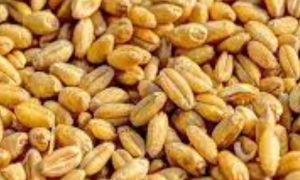Climate-Resilient Jowar: A Viable Alternative To Wheat In India Under A Changing Climate

India’s wheat production is at risk due to rising temperatures, prompting researchers to explore sorghum as an alternative cereal for the rabi season. A new study examines the sensitivity of wheat and sorghum yields to temperature changes, highlighting wheat’s vulnerability and sorghum’s resilience. The water requirements and footprints of the two crops are also compared. Promoting sorghum cultivation can provide a climate-resilient option for Indian agriculture, ensuring food security and efficient land utilisation in a changing climate. Policymakers should focus on diversifying crops, improving management practises, and expanding the market for sorghum.
India, the world’s second-largest wheat producer, faces increasing concerns about the crop’s sensitivity to rising temperatures. As a potential solution, researchers are exploring the viability of (sorghum) as an alternative cereal for the rabi season.
In this piece, I report on the sensitivity of wheat and sorghum yields to historical temperature changes, compare their water requirements, and discuss the implications for future climate projections. This is based on a new paper in . Along with the team of researchers, the paper titled – . Along with the team of researchers, the paper titled –Climate Resilience of dry season cereals in India makes an interesting observation to bring in new science. Professor Ruth DeFries of Columbia University and Professor Ashwini Chhatre of the Indian School of Business led the report that discusses important policy options for supporting Jowar under rapidly changing climatic conditions in India.
Navigating Temperature Risks: Insights on Wheat and Sorghum Crops in India
India has steadily increased wheat production since the Green Revolution, driven by yield and area expansion. In contrast, rabi sorghum production has declined despite increased yields due to a decreased cultivated area. The research study has examined the relationship between temperature and cereal yields in India, shedding light on the vulnerability of wheat crops to increasing temperatures during the rabi season.
The findings reveal a significant negative correlation between wheat yields and maximum daily temperatures, particularly during stage two and stage three of the growth period. With every one-degree celsius rise in temperature, there is a corresponding decrease in wheat yield, amounting to approximately a 3-4% reduction. Surprisingly, precipitation did not significantly impact wheat yields, given the reliance on irrigation or residual moisture. Climate models project an upward trend in maximum daily temperatures during the rabi season, with potential yield reductions of 2.4% to 10.3% for wheat by 2048–52. These projections, however, do not consider factors like improved varieties, management practises, and atmospheric carbon dioxide effects, which can influence yields.
Conversely, Sorghum shows a more marginal association with temperature, influenced by precipitation and radiation. The study found a positive correlation between sorghum yields and temperature, indicating that higher temperatures, accompanied by less precipitation and increased radiation, contribute to increased sorghum production during the early growth stage. However, the study also highlighted the influence of soil characteristics on sorghum yields, with less productive soils leading to lower yields.














